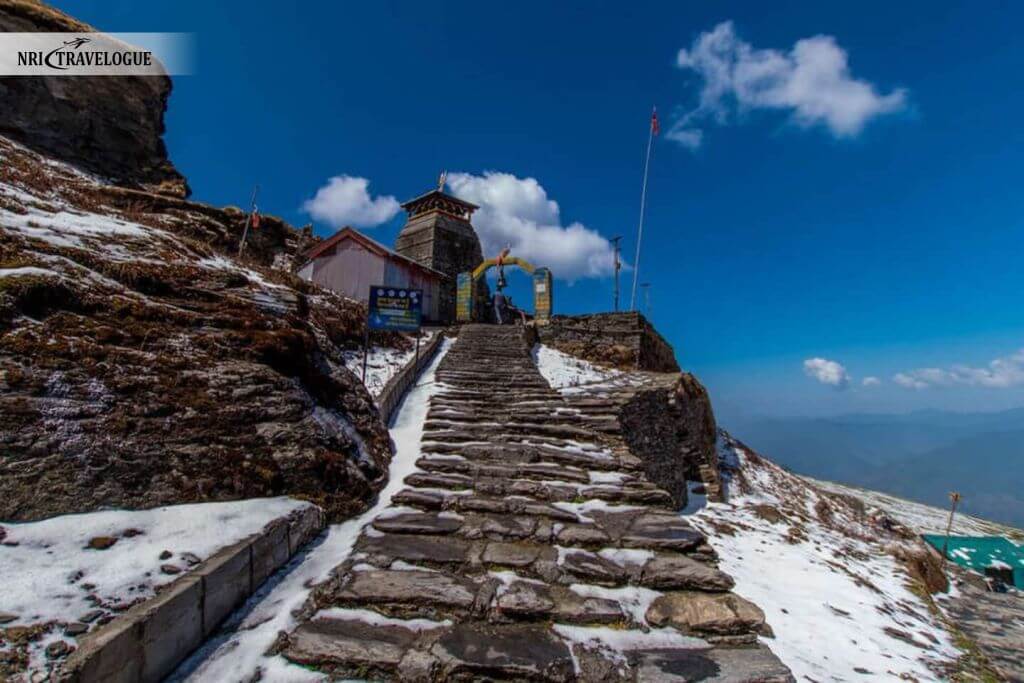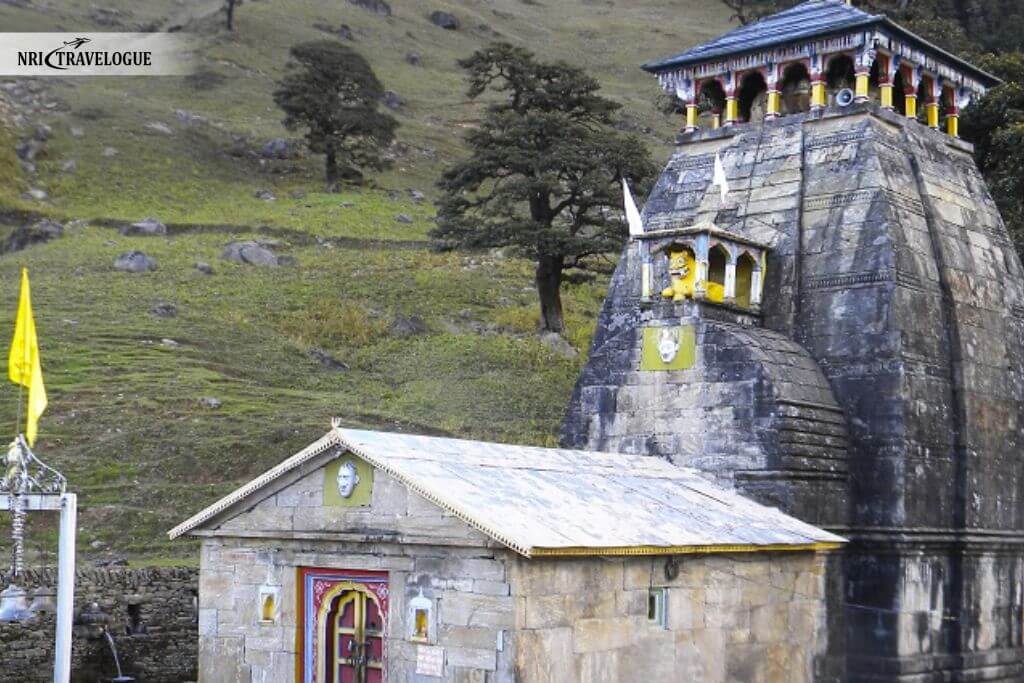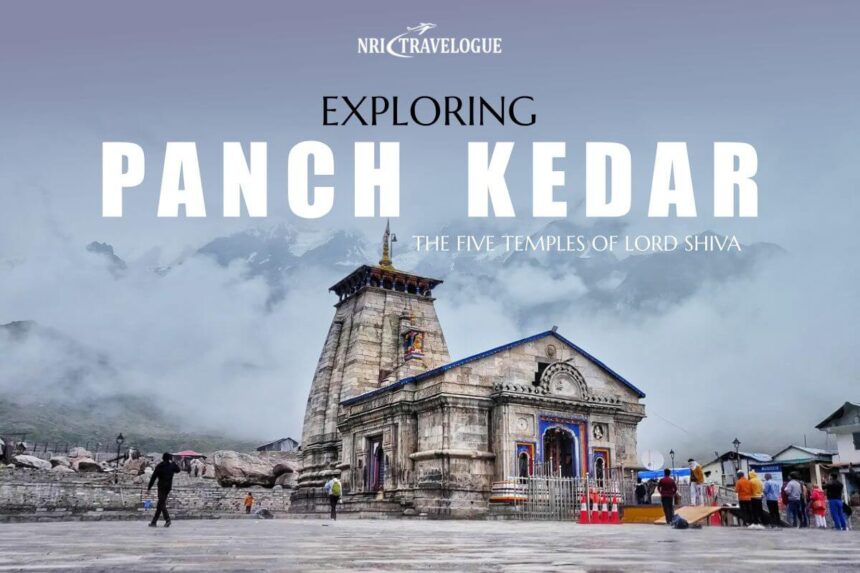There is something magical about the Himalayas: the air feels purer, the silence feels deeper and the mountains seem alive, whispering stories that have existed for thousands of years. Hidden among the sacred ranges of Uttarakhand is one of the most spiritual and mysterious pilgrimages in India Panch Kedar or the five temples of Lord Shiva.
The journey is not just about visiting temples, it’s all about faith, endurance and connection where both nature and the divine come alive. Whether you are a spiritual seeker, adventure lover or simply someone curious about India’s cultural treasures, exploring Panch Kedar is an experience that will stay with you forever.
The Legend Behind Panch Kedar
According to Hindu mythology, after the Great War of Mahabharata, the Pandavas were burdened with guilt for killing their own kin. They wished to seek forgiveness from Lord Shiva but Lord Shiva, displeased with the bloodshed, disguised himself as a bull and disappeared into the Garhwal Himalayas.
When the Pandavas finally spotted him, he tried to dive into the ground to avoid them. But Bhima, the strongest of the brothers, caught hold of him by his hump. At that moment, Lord Shiva vanished, but his body parts appeared at 5 different locations each representing a divine manifestation of Shiva. Together, these places became known as Panch Kedar. Visiting all 5 is believed to wash away all your sins and bring spiritual liberation.
Here’s how the legend describes it:
- Hump appeared at Kedarnath.
- Arms appeared at Tungnath.
- Face appeared at Rudranath.
- Navel (Madhya) appeared at Madhyamaheshwar.
- Hair (locks) appeared at Kalpeshwar
Kedarnath
Let’s begin with the most well-known of all. Kedarnath is the highest and the holiest of the Panch Kedar temples.

Located at an altitude of about 3583 meters near the Mandakini river Kedarnath is one of the 12 Jyotirlingas of Lord Shiva and holds immense spiritual significance , reaching Kedarnath is a journey through devotion and pressure variance. The 16-kilometer trek from Gaurikant to Kedarnath takes you through the snowcapped peaks, waterfalls, and serene valleys. pilgrims chant hara Mahadev as they climb, drawing strength from faith more than fitness.
When you finally see the ancient stone temple surrounded by mighty peaks, especially Mount Kedarnath, it feels like you have reached the very home of the gods. Inside the main sanctum houses of pyramid shaped shivling the hump of the bull the form Lord Shiva took to bless the Pandavas. The best time to visit is from May to October, as the temple remains closed during winter due to heavy snow. The Kedarnath temple is believed to have been originally built by the Pandavas and later reconstructed by Adi Shankaracharya in the 8th century.
Tungnath
Next on the divine journey is Tungnath, sitting proudly at an altitude of 3680 meters making it the highest Shiva temple in the world. The name Tungnath literally means Lord of the peaks.

It is located in the Rudraprayag district, and according to mythology, it is where Lord shiva’s arms appeared. Unlike the Kedarnath long trail the trek to Tungnath is relatively short about four kilometers from Chopta Often called the mini Switzerland of India. The path is completely steep but well paved, and as you climb every turn reveals breathtaking views of the snow-capped Nanda Devi peaks.
During winter, the temple is covered in thick snow, and the ideal is shifted to Mukumath, a nearby village. Apart from being a spiritual sight, Tungnath is loved by trekkers and nature enthusiasts. Just a 1.5-kilometre trek further takes you to Chandra Shila peak, where legend says Lord Rama meditated after defeating Ravana. The sunrise view from Chandra Shila is something you will never forget about the Himalayas glowing gold in the early light. April to November is the best time to visit. Early mornings are ideal for trekking.
Rudranath
If Kedarnath feels majestic and Tungnath feels peaceful, Rudranath feels mysterious. It is believed that the face of Lord Shiva appeared here and true to that legend the landscape feels otherworldly wild, raw and ancient.

Located at 3600 Rudranath is the most remote among the Pancha Kedar temples. The journey here is challenging but deeply rewarding. The trek takes you through the dense forests, Alpine meadows, and small stone huts where shepherds rest during summer.
The temple is small and stone built sitting in a natural rock cave surrounded by towering peaks. A crystal clear stream flows nearby, and when the mist rolls in it feels like the mountain itself is breathing. Inside the natural shivling looks like a human face, half smiling, half meditative, pilgrims believe that Lord Shiva space symbolizes his compassion and power. Real places on earth actually feel this quiet and divine. Rudranath is not just crowded, and reaching it feels like walking into a secret corner of heaven. May to October is when the snow melts and the trails open.
Madhyameshwar
Madhyameshwar lies in a lush Green Valley surrounded by snowcapped mountains. Places where the naval of the midsection of Lord Shiva is said to have appeared.

At about 3497 meters, the temple offers one of the most stunning backdrops: the majestic peaks of Chakuamba and Kedarnath stand tall behind it. The trek basically starts from Ransi village about 20 kilometers from Sukhimath. It’s a 16 to 18-kilometer trail that passes through forest meadows and tiny mountain villages. The last stretch is particularly beautiful with waterfalls and lush valleys.
If you love solitude, there is a smaller shrine called Buddha madhyameshwar located higher up and offering panoramic views that will take your breath away. The temple architecture is simple yet powerful. The priest lights lamps as dusk falls and the trans echo softly through the mountains. Sitting outside the temple at twilight with Himalayas turning golden is one of the rare moments where time feels still. May to October is the best time to visit. In the winter season, the idol is moved to Ukhimath where worship continues.
Kalpeshwar
The final and only temple among the Panch Kedar that remains open throughout the year is Kalpeshwar. It is the smallest of the five yards and spiritually profound.

Located in the Urgam valley at around 2000 meters Kalpeshwar is where Lord shiva’s hair appeared. The temple is nestled inside a cave surrounded by green forests and apple orchards. Unlike other higher temples, the route is easier and can be reached.
Just with the short trek from Helang village on the Badrinath Rd. The walk takes about an hour and passes through beautiful meadows and traditional homes. Inside The Cave, the natural rock formation resembling tangled locks of hair is worshipped. The atmosphere here is completely intimate and deeply peaceful. You can hear the sound of flowing water and also feel a completely cool mountain breeze even inside The Cave. Kalpeshwar is not just about spirituality; it’s all about calmness. The surrounding valley fields are untouched by modern life, making it the perfect place to end your Panch Kedar journey with reflection and gratitude.
How to Plan Your Panch Kedar Yatra?
Visiting all 5 is not just a trip; it’s a spiritual circuit that takes time and effort. If you plan effectively, you can visit the temples perfectly. The total journey can take around 15 to 20 days depending on your pace and weather conditions.
| Temple | Altitude (m) | Main Body Part | Base Village / Start Point | Best Time to Visit |
| Kedarnath | 3,583 | Hump | Gaurikund | May–Oct |
| Tungnath | 3,680 | Arms | Chopta | Apr–Nov |
| Rudranath | 3,600 | Face | Sagar / Mandal | May–Oct |
| Madhyamaheshwar | 3,497 | Navel | Ransi | May–Oct |
| Kalpeshwar | 2,200 | Hair | Helang / Urgam | All Year |
If you plan efficiently, you can visit the temples in the following sequence (as most pilgrims do):
- Kedarnath
- Tungnath
- Rudranath
- Madhyamaheshwar
- Kalpeshwar
Tips for travelers
Basic stamina is really important, as some treks might be steep and remote. You must pack light but warm, as the weather in the higher kedars change quickly. Hire local guides because they know the routes and local stories. You will meet humble, kind villagers and experience the hospitality, respect the environment, these are the sacred mountains and avoid littering and loud music.
The Spiritual Essence of Panch Kedar
The Panch Kedar trek isn’t only about reaching temples, it’s about what happens inside you as you walk. The higher you climb, the quieter it becomes. The noise of the world fades, and a sense of peace takes over.
At each temple, you feel a different energy:
- Kedarnath feels powerful.
- Tungnath feels pure.
- Rudranath feels mysterious.
- Madhyamaheshwar feels nurturing.
- Kalpeshwar feels eternal.
So, in short you need to know that exploring Panch Kedar is like walking through the pages of an ancient story, one written by nature and devotion together. Each temple tells a part of Lord Shiva’s legend, but more importantly, each teaches a lesson. Kedarnath teaches faith Tungnath teaches balance Rudra Nath teaches humility Madhya Maheshwar teaches gratitude and Kalpeshwar teaches peace.









